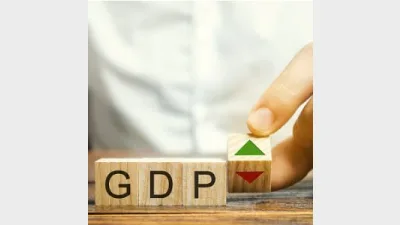Quick recovery prompts HSBC to revise GDP upwards



Gross domestic product (GDP) for 2021 has been revised up from 3.5% to 4.3% thanks to the faster-than-expected recovery, according to HSBC.
There had been a fall of 1.9% in the third quarter, which was smaller than expected, but HSBC said it expected a strong rise in the fourth quarter. This would lead to an earlier return to the pre-Delta level of GDP.
“Australia's economy is re-opening and a faster-than-expected recovery in activity is underway from the lows of the Delta-variant related lockdowns in Q3 2021,” it said.
“Activity restrictions have been eased and the international border is set to re-open soon, although many state border restrictions remain.
“The Omicron variant is a risk to the forecast, but it is too early to determine its implications with confidence.”
Looking ahead to 2022, GDP expectations had been revised from 2.6% to 3.5% while 2023 expectations remained unchanged at 3%.
However, there would only be a gradual pick-up in wages growth and core inflation which meant the Reserve Bank of Australia (RBA) would be unlikely to raise interest rates until the second half of 2023.
“A case can certainly be made for lifting the cash rate earlier, or equally, as the RBA suggests, not until 2024. However, hiking from Q3 2023 seems most plausible to us. In the last few months, the balance of risks for medium-term inflation has shifted higher, suggesting an earlier lift-off than the RBA’s forward guidance envisage.
“But this does not mean cash rate hikes in 2022 – the remaining uncertainty, particularly on the supply side, low wages growth, and transmission lags from activity to inflation, necessitates some remaining stimulus yet.”
Regarding quantitative easing (QE), it was expected the RBA would taper QE from $4 billion per week to $1 billion per week and end in mid-2022. Tapering progress would be dependent on how the bond market was functioning and the progress towards the RBA’s inflation and unemployment goals.
In the US, the Federal Reserve was expected to begin in the second quarter of 2022, a year earlier than expected, followed by 25bps increases in September 2022, March 2023 and September 2023.
Recommended for you
Higher interest rates could be on the cards for 2026 after monthly CPI inflation for October showed an increase of 3.8 per cent.
Global actively managed ETF assets hit a record high in October, according to independent research and consultancy firm ETFGI, breaking the record set the previous month.
Federation Asset Management has appointed an investment director and head of responsible investments to support ESG integration strategy across the firm.
Global X has announced the launch of its latest ETF, providing access to Japan’s largest companies under a low-cost structure.












